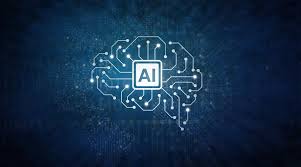Source: unite.ai
Researchers from Radboudumc helped advance artificial intelligence (AI) in the clinical setting after demonstrating how AI can diagnose problems similar to a doctor, while also showing how it reaches the diagnosis. AI already plays a role in this environment, being utilized to quickly detect abnormalities that could be labeled as a disease by experts.
AI in the Clinical Setting
Artificial intelligence has been increasingly used in the diagnosis of medical imaging. What was traditionally done by a doctor studying an X-ray or biopsy to identify abnormalities can now be done with AI. Through the use of deep learning, these systems can diagnose by themselves, oftentimes being just as accurate or even better than human doctors.
The systems are not perfect, however. One of the issues is that the AI does not demonstrate how it is analyzing the images and reaching a diagnosis. Another problem is that they do not do anything extra, meaning they stop once reaching a specific diagnosis. This could lead to the system missing some abnormalities even when there is a correct diagnosis.
In this scenario, the human doctor is better at observing the patient, X-ray, or other images overall.
Advancements in the AI
These problems for AI in the clinical setting are now being addressed by researchers. Christina González Gonzalo is a Ph.D. candidate at the A-eye Research and Diagnostic Image Analysis Group of Radboudumc.
González Gonzalo developed a new method for the diagnostic AI by utilizing eye scans that found abnormalities of the retina. The specific abnormalities can be easily found by human doctors and AI, and they often are found in groups.
In the case of the AI system, it would diagnose one or a few of the abnormalities and stop, demonstrating one of the downsides of using such a system. In order to address this, González Gonzalo developed a process where the AI goes over the picture multiple times. When it does this, it learns to ignore the places that it had already covered, which allows it to discover new ones. On top of that, the AI also highlights suspicious areas, making the whole diagnostic process more transparent for humans to observe.
This new method is different from the traditional AI systems used in these settings, which base their diagnosis on one assessment of the eye scan. Now, researchers can see how the new AI system reached its diagnosis.
In order to ignore the already detected abnormalities, the AI system digitally fills them with healthy tissue from around the abnormalities. The diagnosis is then made based on all of the assessment rounds being added together.
The study found that this new system improved the sensitivity of the detection of diabetic retinopathy and age-related macular degeneration by 11.2+/-2.0%.
This new system could really change how AI is used when diagnosing diseases based on abnormalities, and the biggest advancement is the new transparency that it can demonstrate when undergoing this process. This transparency is what will allow even more future corrections and advancements, with the end-goal being an AI system that could diagnose problems much more accurately and faster than the best human experts within the field. All of this could also lead to a more trustworthy system, possibly resulting in the widespread adoption of it within the larger field.

 Starting: 1st of Every Month
Starting: 1st of Every Month  +91 8409492687 |
+91 8409492687 |  Contact@DevOpsSchool.com
Contact@DevOpsSchool.com